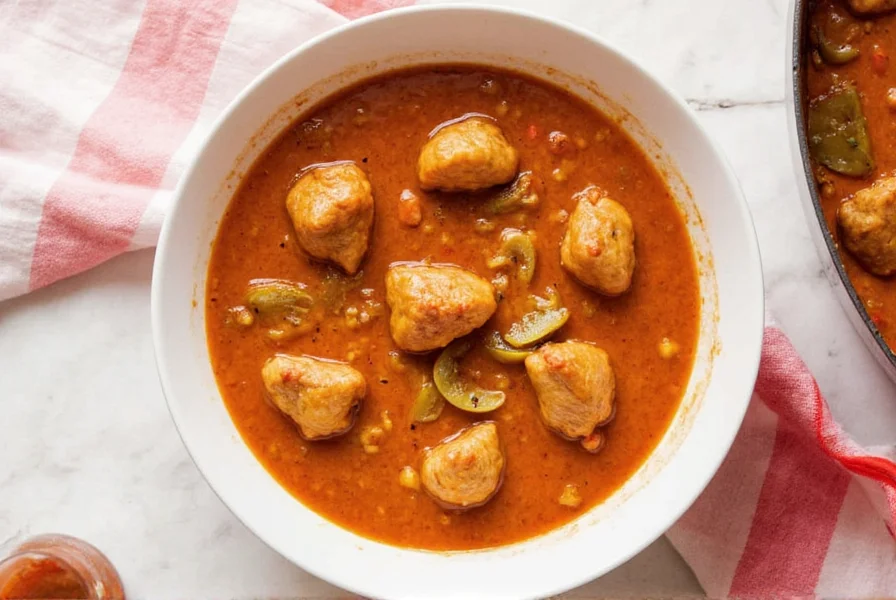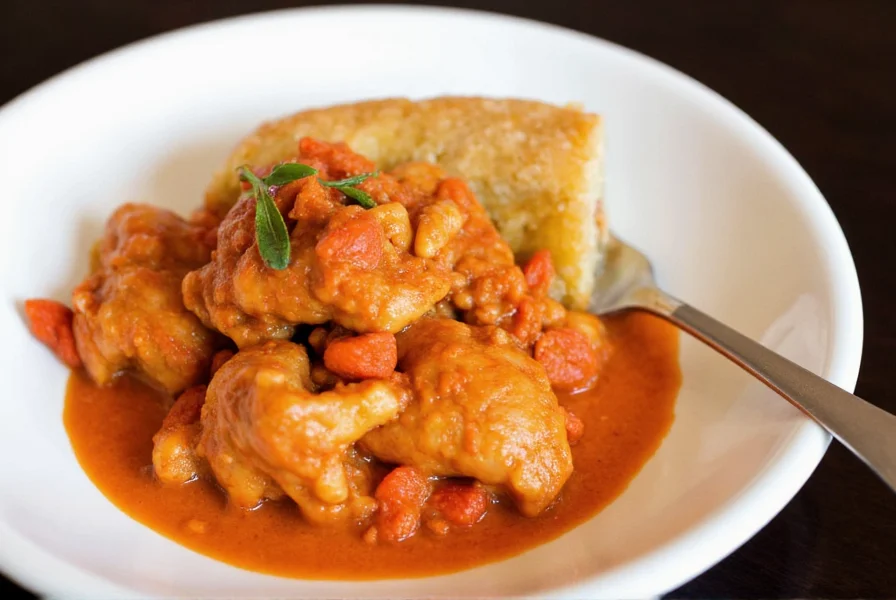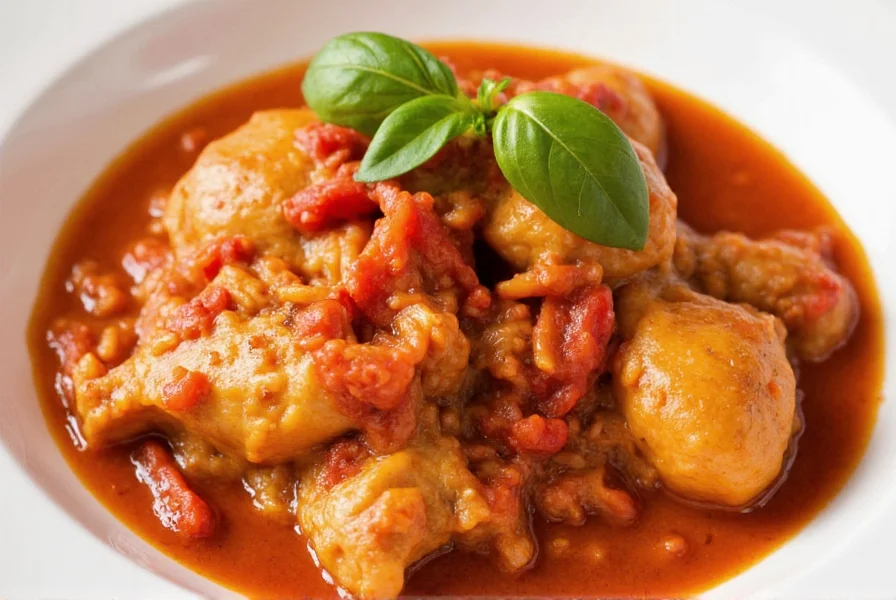Paprika isn't just a spice—it's the soul of Hungarian cuisine and a versatile flavor enhancer for countless dishes. Whether you're working with sweet Hungarian, smoky Spanish, or hot Hungarian varieties, understanding how to properly use paprika transforms ordinary meals into culinary experiences. This guide provides tested techniques and authentic recipes that maximize paprika's complex flavor profile while avoiding common pitfalls like bitterness from overheating.
The Essential Guide to Paprika Varieties and Uses
Not all paprika is created equal. The type you choose dramatically impacts your dish's final flavor:
| Type of Paprika | Flavor Profile | Best Recipe Applications |
|---|---|---|
| Hungarian Sweet | Fruity, earthy, mild | Chicken paprikash, goulash, potato salads |
| Spanish Smoked (Pimentón) | Deep smoky, medium heat | Paella, roasted vegetables, bean stews |
| Hungarian Hot | Spicy with sweet undertones | Meat rubs, spicy sauces, hearty stews |
| American Standard | Mild, one-dimensional | Garnishing, mild applications |
For authentic paprika recipes, seek out Hungarian or Spanish varieties from specialty spice shops or reputable online retailers. The difference in flavor complexity compared to supermarket brands is remarkable. Store paprika in an airtight container away from light and heat, and replace it every 6-12 months for optimal flavor.
Authentic Hungarian Chicken Paprikash Recipe
This traditional paprika chicken recipe serves 4 and requires 1.5 hours from start to finish. The key to success lies in properly blooming the paprika and maintaining the right temperature throughout cooking.

Ingredients
- 3 lbs chicken thighs and drumsticks, skin-on
- 3 large yellow onions, finely diced
- 3 tablespoons Hungarian sweet paprika (NOT smoked)
- 2 tablespoons lard or vegetable oil
- 1 red bell pepper, sliced
- 1 tomato, peeled and chopped
- 1 cup chicken broth
- 1 cup sour cream, room temperature
- Salt and pepper to taste
- Egg noodles or dumplings for serving
Step-by-Step Instructions
- Brown the chicken: Season chicken generously with salt and pepper. In a large Dutch oven, heat lard over medium heat. Brown chicken in batches, skin-side down, until golden (about 6 minutes per side). Remove and set aside.
- Sauté onions: Reduce heat to medium-low. Add onions and cook slowly for 20-25 minutes until deep golden brown (not burnt). This slow caramelization is crucial for authentic flavor.
- Bloom the paprika: Remove pot from heat. Stir in paprika until fully incorporated with the onions. Return to very low heat for 1 minute to bloom the spice without burning.
- Build the stew: Return chicken to pot. Add bell pepper, tomato, and broth. Bring to a gentle simmer, cover, and cook for 45 minutes until chicken is tender.
- Add finishing touches: Remove chicken. Stir sour cream into sauce until smooth. Return chicken to coat in sauce. Adjust seasoning.
- Serve: Serve immediately over egg noodles with a dollop of extra sour cream.
Proven Techniques for Perfect Paprika Dishes
Master these professional techniques to elevate your paprika recipes from good to exceptional:
The Blooming Method
Never add paprika directly to hot liquid—that causes bitterness. Instead, remove your cooking vessel from heat, stir paprika into fats or sautéed vegetables, then return to low heat for 30-60 seconds. This 'blooms' the spice, releasing its essential oils and creating a roux-like base for sauces.
Temperature Control
Paprika burns at temperatures above 350°F (175°C), turning bitter. Always cook paprika-based sauces over low to medium-low heat. If your sauce develops a bitter taste, add a small amount of sugar or honey to counteract it.
Layering Flavors
For depth in paprika recipes, combine multiple paprika varieties. Try using 2 parts sweet Hungarian with 1 part smoked Spanish paprika in stews for complexity without overwhelming smoke.
Versatile Paprika Recipe Variations
Once you've mastered the basic technique, experiment with these delicious paprika recipe adaptations:
Vegetarian Paprika Potato Soup
Replace chicken with 2 lbs waxy potatoes, add 1 cup white beans, and use vegetable broth. Finish with a splash of lemon juice to brighten the earthy paprika flavor. This easy paprika recipe for vegetarians delivers comfort food perfection.
Smoked Paprika Roasted Vegetables
Toss root vegetables with 2 tablespoons smoked paprika, 3 minced garlic cloves, olive oil, salt, and rosemary. Roast at 400°F (200°C) for 35-40 minutes. The best paprika for roasting vegetables is Spanish smoked variety, which complements caramelized vegetables beautifully.
Paprika Chicken Wings
Create a dry rub with 3 tablespoons sweet paprika, 1 tablespoon garlic powder, 2 teaspoons onion powder, 1 teaspoon cayenne, and salt. Toss with wings and bake at 425°F (220°C) for 45 minutes. This quick paprika chicken recipe makes perfect game day food.
Avoiding Common Paprika Recipe Mistakes
Even experienced cooks make these paprika preparation errors:
- Burning the spice: Paprika scorches easily. Always remove from heat when adding it.
- Using old paprika: Stale paprika lacks flavor. Check freshness by rubbing a small amount between fingers—if aroma is weak, replace it.
- Incorrect substitutions: Don't replace Hungarian sweet paprika with cayenne or chili powder in traditional recipes—they create entirely different flavor profiles.
- Adding sour cream directly to hot liquid: Temper sour cream by whisking in some hot sauce first to prevent curdling.
Storing Paprika for Maximum Freshness
Paprika loses potency quickly when exposed to air, light, and heat. For best results in your paprika recipes:
- Store in an airtight container away from stove and sunlight
- Buy whole paprika peppers and grind as needed for ultimate freshness
- Keep in refrigerator for extended shelf life (up to 18 months)
- Test freshness by rubbing between fingers—if little aroma, it's time to replace
When shopping for paprika, look for deep red color and strong aroma. Quality Hungarian paprika often indicates its region of origin (like Szeged or Kalocsa) on the packaging—a sign of authenticity for traditional paprika recipes.

Frequently Asked Questions About Paprika Recipes
What's the difference between sweet paprika and smoked paprika in recipes?
Sweet Hungarian paprika offers a fruity, earthy flavor that's essential for authentic Hungarian dishes like chicken paprikash. Smoked Spanish paprika (pimentón) provides a deep wood-smoke flavor that works better in Spanish and American recipes. They're not interchangeable in traditional recipes—using smoked paprika in Hungarian paprikash would create an inauthentic flavor profile.
Why does my paprika recipe taste bitter?
Bitterness in paprika dishes almost always comes from overheating the spice. Paprika burns at temperatures above 350°F (175°C). Always remove your cooking vessel from heat when adding paprika, stir it in, then return to very low heat for no more than 60 seconds. Never add paprika directly to boiling liquid.
Can I substitute chili powder for paprika in recipes?
Chili powder makes a poor substitute as it contains additional spices like cumin and oregano that alter the dish's flavor profile. For authentic Hungarian paprika chicken recipe results, seek out proper Hungarian sweet paprika. In a pinch, mix 2 parts sweet red pepper flakes with 1 part cayenne for closer approximation, but flavor won't be authentic.
How can I make my paprika chicken recipe creamier?
For authentic creaminess in Hungarian paprikash, use full-fat sour cream tempered with some of the hot sauce before adding. For dairy-free options, blend soaked cashews with water or use coconut cream. Never boil the sauce after adding dairy—simmer gently to maintain smooth texture in your paprika chicken dinner.
What are the best side dishes for paprika chicken?
Traditional Hungarian sides include egg noodles (csipetke), dumplings, or mashed potatoes to soak up the rich sauce. For lighter options, pair with roasted root vegetables or a crisp cucumber salad. Avoid strongly flavored sides that would compete with the paprika—let the spice shine as the star of your easy paprika chicken recipe.











 浙公网安备
33010002000092号
浙公网安备
33010002000092号 浙B2-20120091-4
浙B2-20120091-4